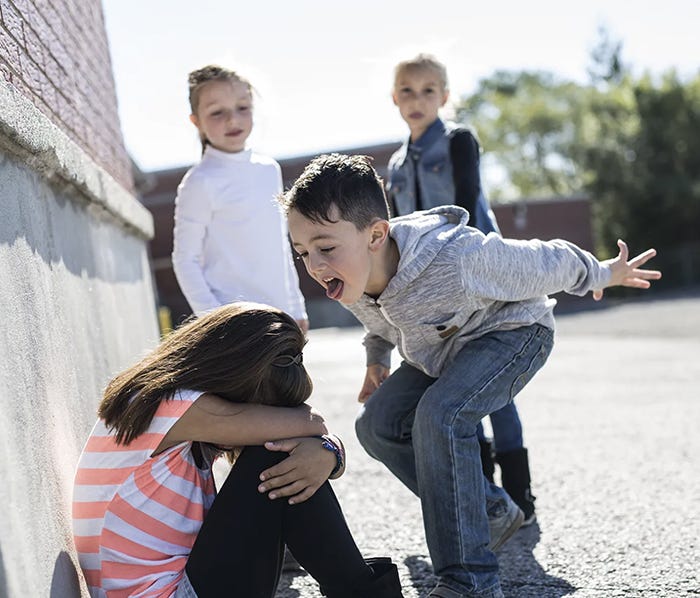



BLOG: Six Tips to Prevent Bullying in your P.E. Class
Physical education class is fertile ground for bullies. Athletic and social skills are on full display, ripe to be sorted into a pecking order. Locker rooms, showers, and remote fields provide cover for bad behavior.
A study of 10th-grade students in Canada revealed that 11.1% experienced physical bullying. 12.8% were subject to social bullying, and 13.6% endured verbal bullying. Furthermore, if a student chose to quit or underachieve in P.E., bullying was frequently a key factor in that decision. (Hurley & Mandigo, 2010)
Victims of gym bullies are not only less active in class, but less active over the course of their lives. Bullies undermine the very mission of P.E.
As a physical educator, the buck stops with you. Here are some suggestions to prevent bullying in your P.E. class:
1. GET TO KNOW EVERY STUDENT.
It can be tempting to focus on the natural athletes in your class. It’s fun to see them excel. Their success feels like yours. However, the ones who need you the most are the loners, the less athletically inclined. Make time to meet and understand them. They may have hidden passions that suggest a great class activity, like step dancing or yoga. Ask them if they feel safe in P.E. class. You may not get a straight answer right away, but the fact that you care builds trust. They will be less tempting targets if potential bullies see that Coach is in their corner.
2. MAKE YOUR EXPECTATIONS CLEAR.
When getting to know your athletic and socially adept students, stress that you do not tolerate bullying. As much as you may like a star student, you will never be on the side of a bully and there will be consequences. Don’t single them out — this is your policy for every student. Make it clear that you admire them and expect great things. Your top students may even become allies, standing up for victims and modeling positive behavior.
3. PRAISE AND SINGLE OUT APPROPRIATE BEHAVIOR.
Young people want trusted adults to be proud of them. As “Coach,” you have a lot of capital. Lavish praise on athletes who motivate less talented students. Foster partnerships — maybe an athlete needs a tutor or study buddy, giving a victim access to a crucial ally. While competition can be fun and healthy, emphasize that the whole class is a team. Effort and constant improvement are what matters.
4. DISCIPLINE BULLIES WHEN IDENTIFIED.
When you catch a student bullying, act swiftly with pre-determined consequences. Don’t give a pass to your favorite students. You are their teacher, not their peer. The repercussions of unchecked bullying can be dire, for both the victim and the bully. If the bully admires you, leverage that respect. Confide in him how disappointed you are, that you expect better of him, and that you and your colleagues will have your eye on him. Enlist the help of counselors and administrators if you need extra support.
5. PRE-ASSIGN AND CHANGE UP TEAMS.
It’s a gym class cliché — being “picked last” for teams. This can put kids off physical activity for years to come. Don’t play that game. Pre-assign teams and activity groups. Switch up the teams and activity groups so that a victim isn’t stuck on a team with a bully.
6. KEEP STUDENTS ACTIVE AND SAFE.
The more engaged and supervised your students are, the less time they have to engage in bullying behavior. Keep breaks short and refocus your students’ attention on the next activity. Choose activities that are age-appropriate and encourage teamwork!